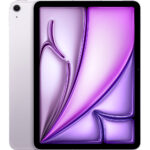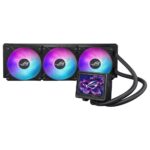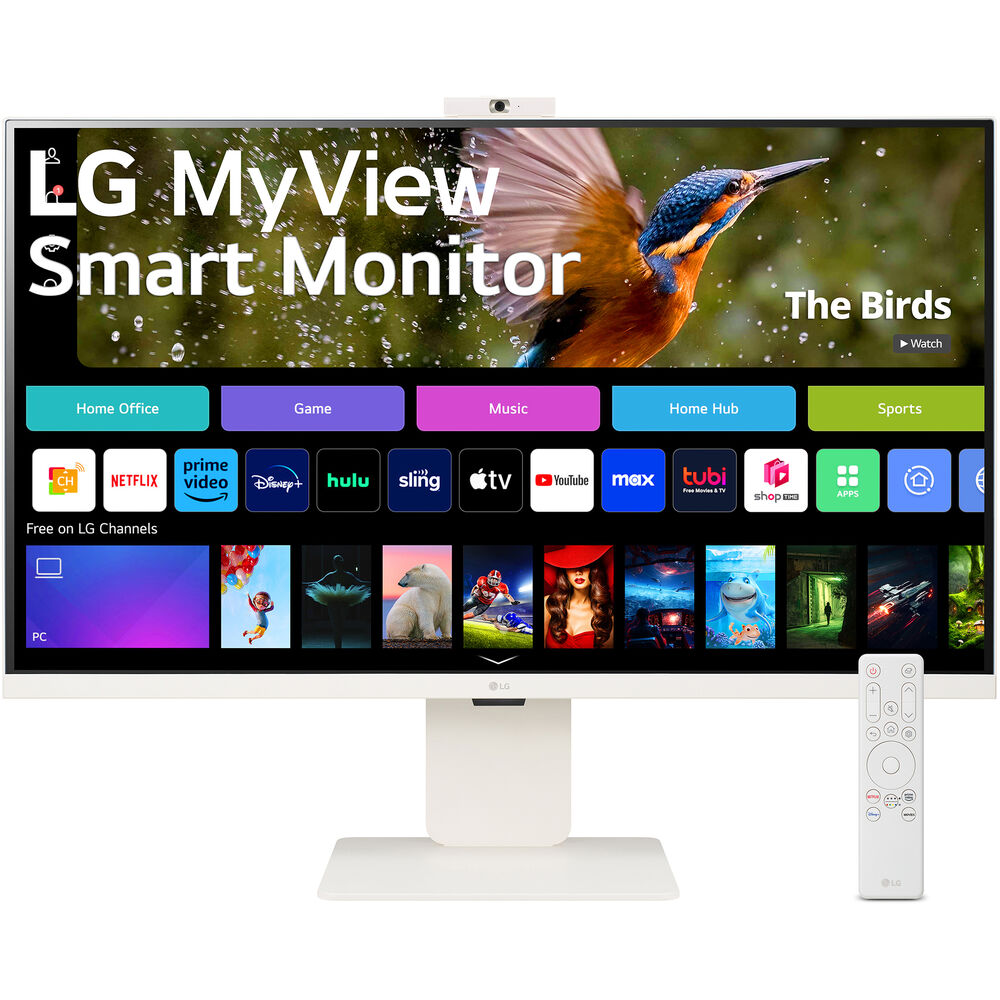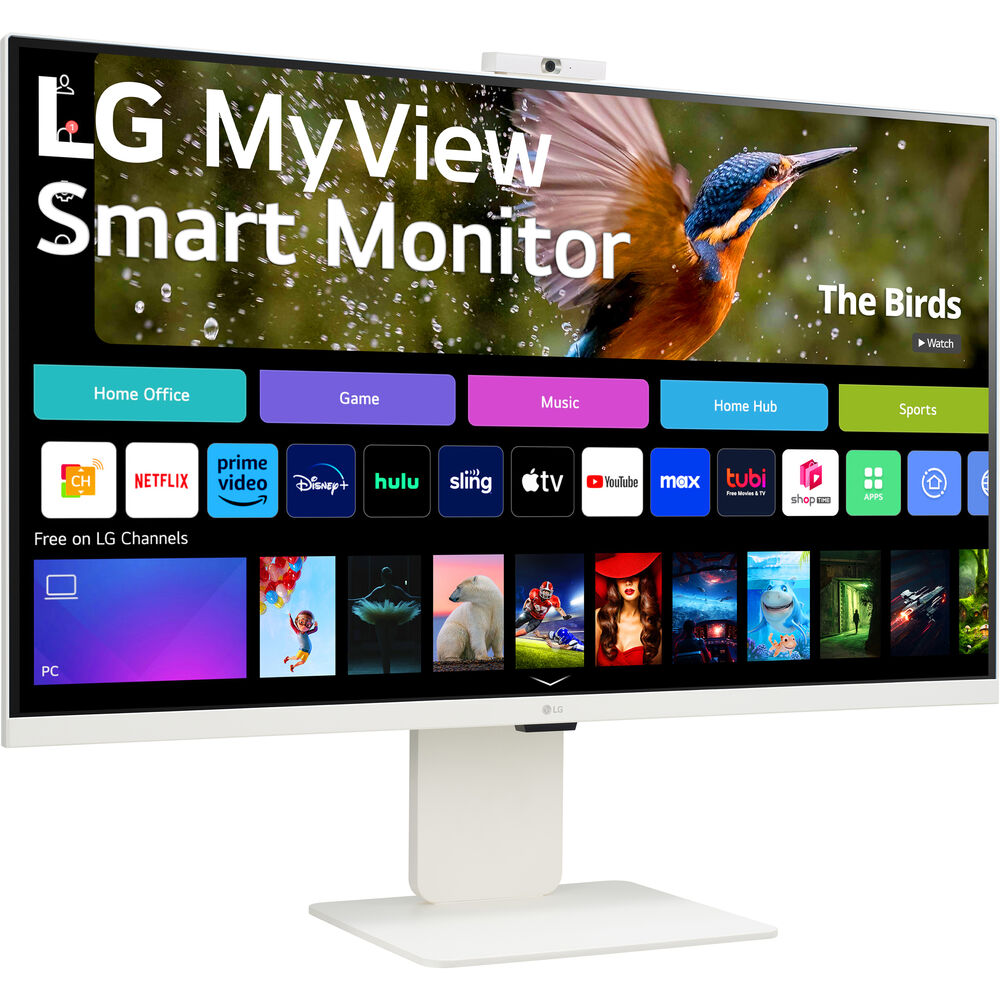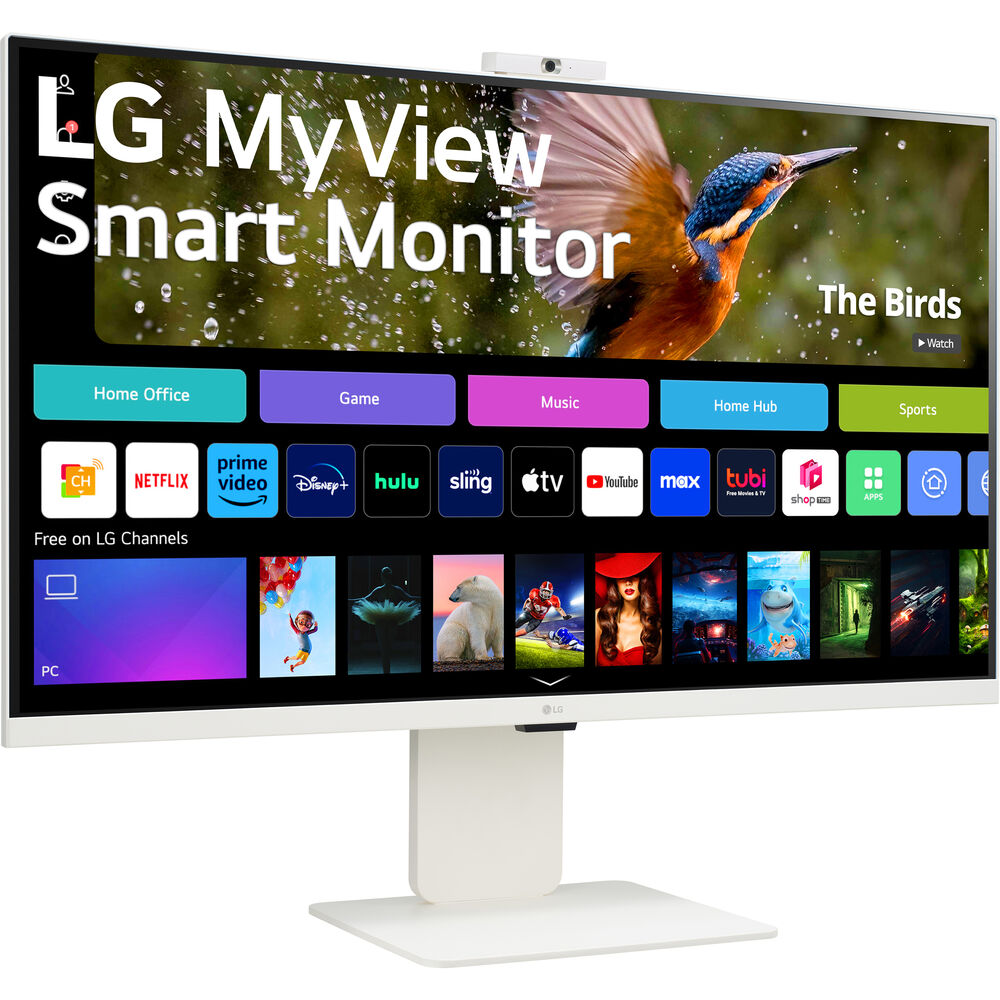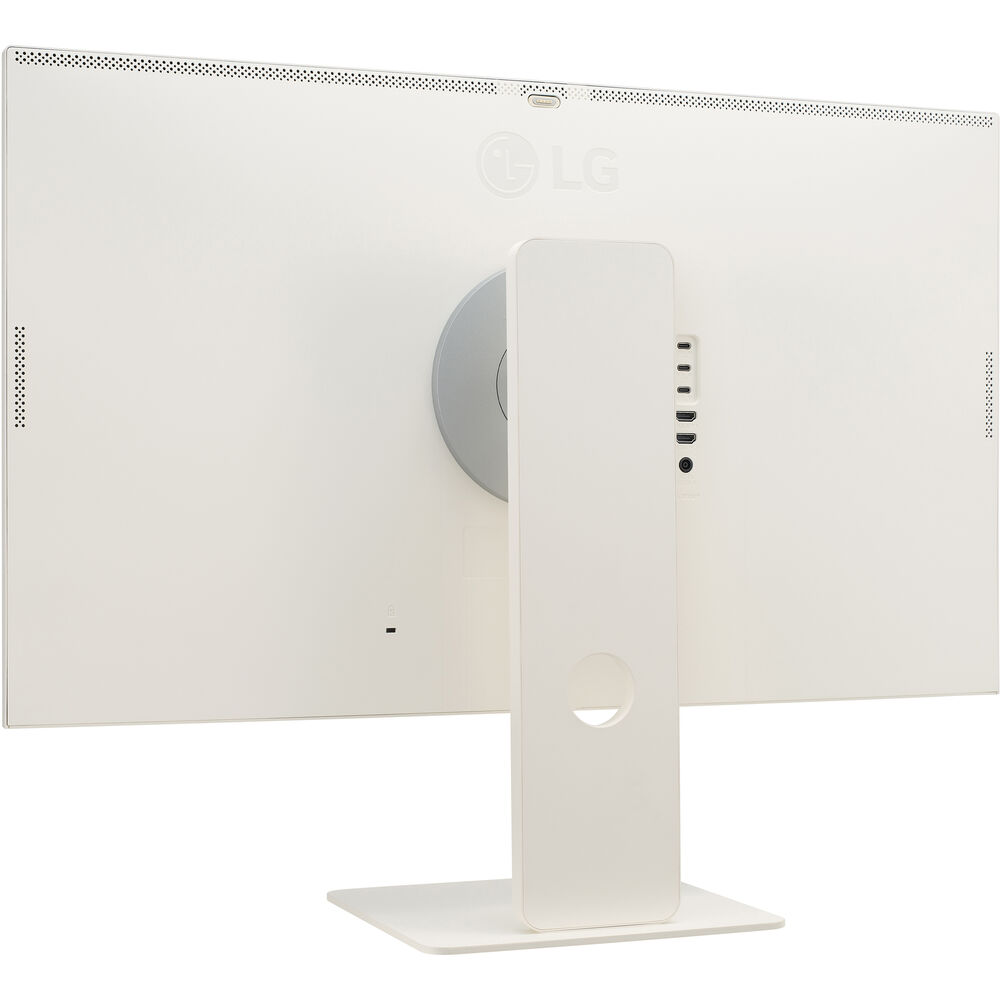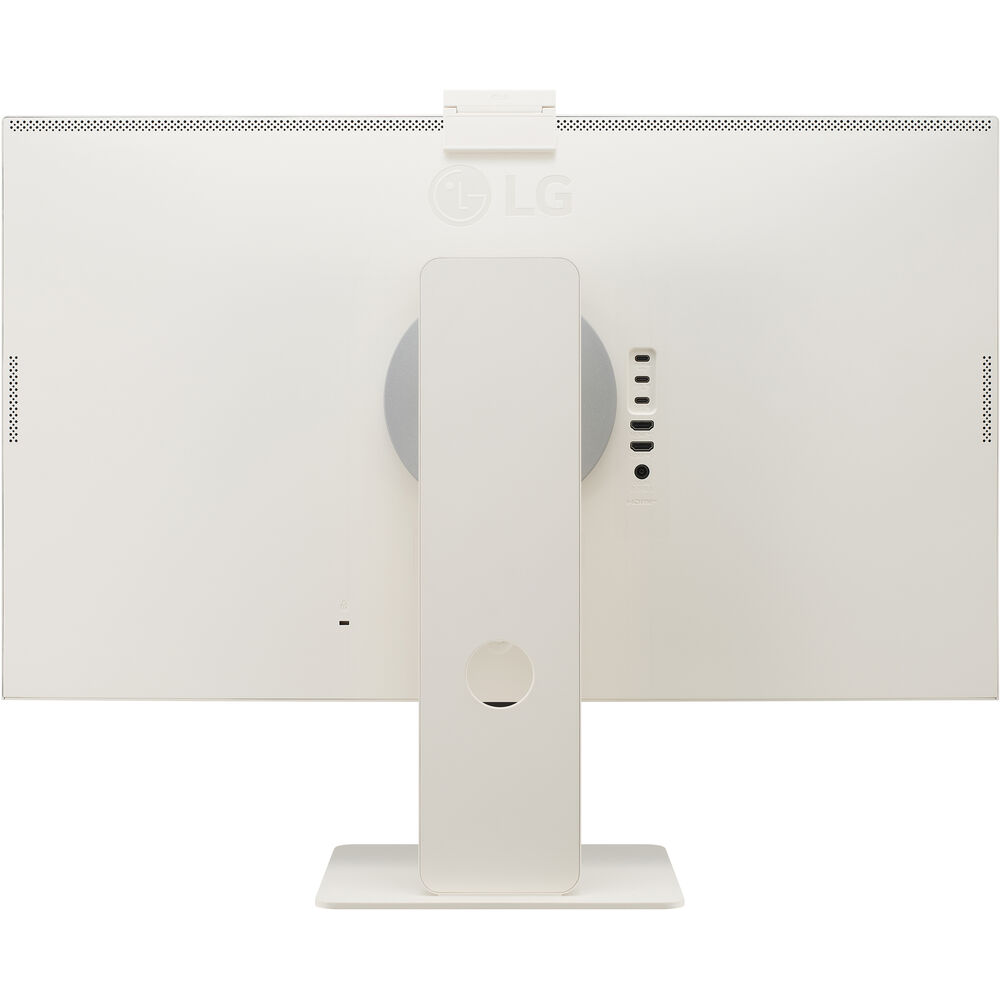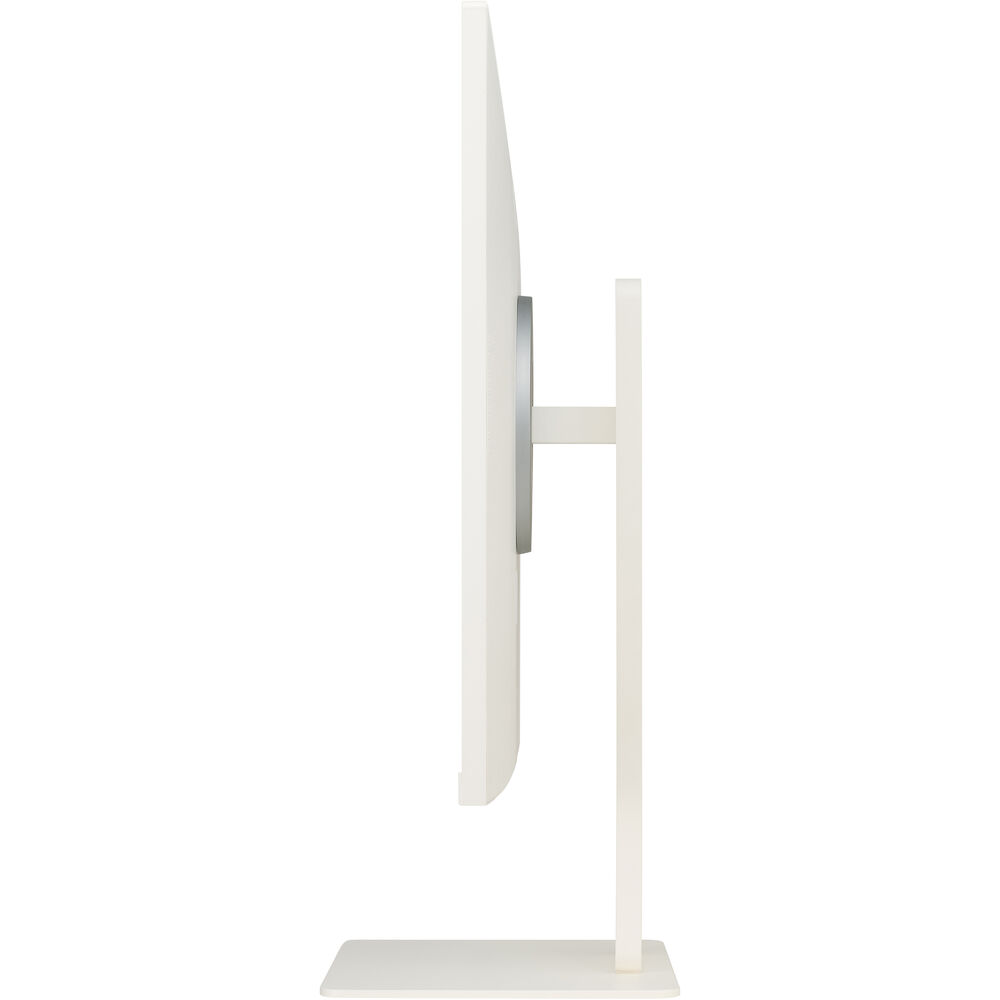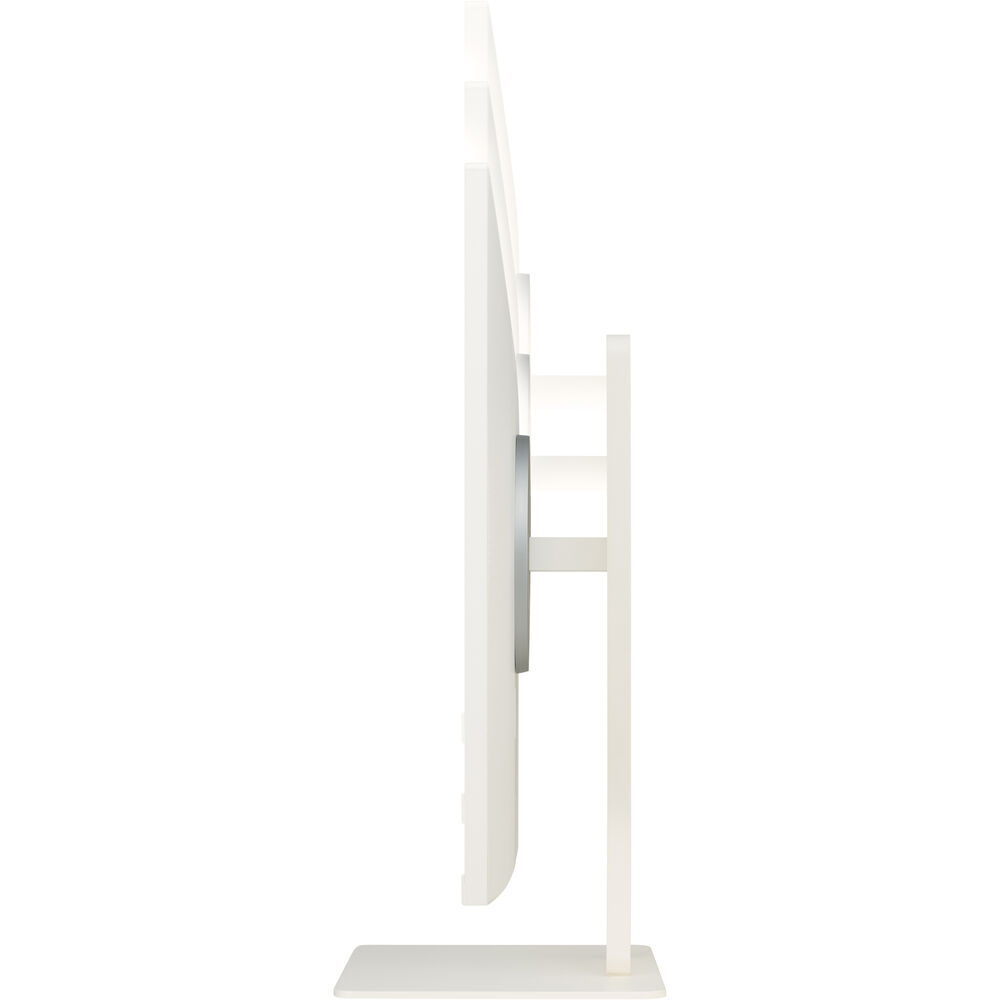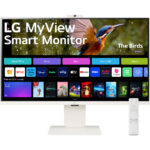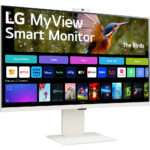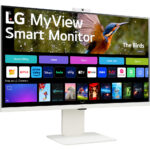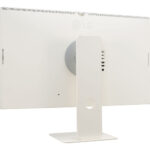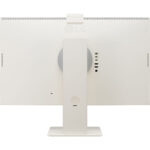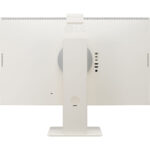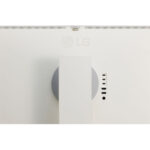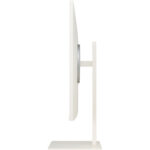LG 32″ 32SR85U 4k IPS MyView Smart Monitor with Built-in FHD Webcam and Display Price in Pakistan Specs
| Brand
Name of the company-manufacturer. |
LG |
| Series
Name of the series, which the model belongs to. |
MyView |
| Model
Designation of the model. |
32SR85U |
| Model alias
Other known designations of the model. |
MyView 32SR85U Smart Monitor 32SR85U |
| Model year
The year in which this model was announced. |
2024 |
Display
Information about the main characteristics of the display – panel, backlight, resolution, refresh rate, etc.
| Size class
Size class of the display as declared by the manufacturer. Often this is the rounded value of the actual size of the diagonal in inches. |
31.5 in (inches) |
| Diagonal
Approximate diagonal size of the display. If the manufacturer does not provide such information, the diagonal is calculated from the width and height of the screen. |
801 mm (millimeters) 80.1 cm (centimeters) 31.5354 in (inches) 2.628 ft (feet) |
| Width
Approximate width of the display. If the manufacturer does not provide such information, the width is calculated from the diagonal and the aspect ratio. |
697.306 mm (millimeters) 69.7306 cm (centimeters) 27.453 in (inches) 2.2877 ft (feet) |
| Height
Approximate height of the display. If the manufacturer does not provide such information, the height is calculated from the diagonal and the aspect ratio. |
392.234 mm (millimeters) 39.2234 cm (centimeters) 15.4423 in (inches) 1.2869 ft (feet) |
| Panel type
There are various panel technologies. Each has its own specific features – viewing angles, color reproduction, response time, brightness/contrast, production cost, etc. The image quality depends directly on the type of the display panel used. |
IPS |
| Panel bit depth
The most widely used panels are those with 6, 8, and 10 bits for each of the RGB components of the pixel. They provide 18-, 24-, and 30-bit color, respectively. |
10 bits (8 bits + FRC) |
| FRC
Frame Rate Control (FRC) is a method, which allows the pixels to show more color tones. With quick cyclic switching between different color tones, an illusion for a new intermediate color tone is created. For example, by using FRC, a 6-bit display panel is able to show 16.7 millioin colors, which are typical for 8-bit display panels, and not the standard 262200 colors, instead. There are different FRC algorithms. |
Yes |
| Colors
The maximum number of colors, which the display is able to reproduce, depends on the type of the panel in use and color enhancing technologies like FRC. |
1073741824 colors 30 bits |
| Aspect ratio
The ratio between the horizontal and the vertical side of the display. Some of the standard and widely used aspect ratios are 4:3, 5:4, 16:9 and 16:10. |
1.778:1 16:9 |
| Resolution
Information about the number of pixels on the horizontal and vertical side of the screen. A higher resolution allows the display of a more detailed and of higher quality image. |
3840 x 2160 pixels Ultra HD (UHD) / 4K / 2160p |
| Pixel pitch
The pixel pitch shows the distance from the centers of two neighboring pixels. In displays, which have a native resolution (the TFT ones, for example), the pixel pitch depends on the resolution and the size of the screen. |
0.182 mm (millimeters) 0.0182 cm (centimeters) 0.0072 in (inches) 0.0006 ft (feet) |
| Pixel density
Information of the number of pixels in a unit of length. With the decrease of the display size and the increase of its resolution, the pixel density increases. |
140 ppi (pixels per inch) 55 ppcm (pixels per centimeter) |
| Display area
The percentage of the approximate area, taken by the active part of the screen, to the total front area. |
91.16 % (percent) |
| Backlight
The backlight is the source of light of the LCD display panels. The type of backlight determines the image quality and the color space of the display. There are various backlights such as CCFL, LED, WLED, RGB-LED, and etc. |
W-LED |
| sRGB
sRGB is a color space, developed jointly by Hewlett-Packard and Microsoft in 1996. It is used in different devices such as printers, displays, TV sets, cameras, etc. The sRGB color space covers about 72% of the NTSC color space. |
99 % (percent) |
| DCI P3
DCI P3 is a color space, introduced in 2007 by the SMPTE. It is used in digital cinema and has a much wider gamut than the sRGB. |
95 % (percent) |
| Brightness
Information about the brightness of the screen. It is measured in candela per square metre (cd/m²). |
400 cd/m² (candela per square meter) |
| Static contrast
The static contrast shows the ratio between the brightest and the darkest color, which the display can reproduce simultaneously, for example, within one and the same frame/scene. |
1000 : 1 |
| HDR
HDR expands the contrast ratio (peak luminance and minimal black levels) and color palette to achieve more details across the whole image – from the darkest parts to the brightest ones, which results in more realistic and life-like image. |
HDR10 |
| Horizontal viewing angle
Information about the maximum horizontal viewing angle, within which the image on the screen is of acceptable quality. |
178 ° (degrees) |
| Vertical viewing angle
Information about the maximum vertical viewing angle, within which the image on the screen is of acceptable quality. |
178 ° (degrees) |
| Minimum response time
Information about the minimum amount of time, in which the pixels change from one color to another. Very often the manufacturer provides the response time for transition from grey-to-grey (G2G). |
5 ms (milliseconds) 0.0050 s (seconds) |
| Coating
Information about the type of coating of the display. There are different types of matte and glossy coatings, each of which has its own advantages and drawbacks. |
Anti-glare/Matte |
3D
3D displays use various technologies to achieve a 3D effect. Each of these technologies has its own advantages and drawbacks.
| 3D
Information on whether 3D is supported or not. |
No |
Frequencies
Information about the horizontal and vertical refresh rates/frequencies.
| Vertical frequency (digital)
The vertical frequency/refresh rate shows how many times in a second the image on the screen is refreshed. |
24 Hz – 60 Hz (hertz) |
Power supply and consumption
Information about the power supply and consumption, energy efficiency class, etc.
| 110V
Permissible voltage tolerance in a 110-volt electric system. |
100 V – 120 V (volts) |
| 220V
Permissible voltage tolerance in a 220-volt electric system. |
220 V – 240 V (volts) |
| Alternating current frequency
Requirement regarding the alternating current frequency in the electric system. |
50 Hz – 60 Hz (hertz) |
| Power consumption (off)
Power consumption in off-mode. |
0.3 W (watts) |
| Power consumption (sleep)
Power consumption in sleep/stand by/suspend mode. |
0.5 W (watts) |
Dimensions, weight and color
Information about the dimensions and the weight of the specific model with and without stand as well as the colors, in which it is offered to the market.
| Width
Width without stand in different measurement units. |
714 mm (millimeters) 71.4 cm (centimeters) 28.1102 in (inches) 2.3425 ft (feet) |
| Height
Height without stand in different measurement units. |
420.2 mm (millimeters) 42.02 cm (centimeters) 16.5433 in (inches) 1.3786 ft (feet) |
| Depth
Depth without stand in different measurement units. |
23.5 mm (millimeters) 2.35 cm (centimeters) 0.9252 in (inches) 0.0771 ft (feet) |
| Weight
Weight without stand in different measurement units. |
5.5 kg (kilograms) 12.13 lbs (pounds) |
| Width with stand
Width with stand in different measurement units. |
714 mm (millimeters) 71.4 cm (centimeters) 28.1102 in (inches) 2.3425 ft (feet) |
| Height with stand
Height with stand in different measurement units. |
498.2 mm (millimeters) 49.82 cm (centimeters) 19.6142 in (inches) 1.6345 ft (feet) |
| Depth with stand
Depth with stand in different measurement units. |
217 mm (millimeters) 21.7 cm (centimeters) 8.5433 in (inches) 0.7119 ft (feet) |
| Weight with stand
Weight with stand in different measurement units. |
7.7 kg (kilograms) 16.98 lbs (pounds) |
| Stand depth
Depth of the stand in different measurement units. |
217 mm (millimeters) 21.7 cm (centimeters) 8.5433 in (inches) 0.7119 ft (feet) |
| Colors
Information about the colors, in which the specific model is offered to the market. |
White |
Ergonomics
Information about the ergonomic functions – height adjustment, swivel angles, tilt angles, etc.
| VESA mount
Information about whether there is a possibility for wall mounting according to the VESA Mounting Interface Standard (MIS). |
Yes |
| VESA interface
There are many various interfaces under the VESA standard, which differ in the size of the brackets, the distances between the screw holes and their number. |
100 x 100 mm |
| Removable stand
Information about whether the stand can be dismounted. Usually, this is required for wall mounting. |
Yes |
| Height adjustment
Information about whether the stand allows height adjustment. |
Yes |
| Height adjustment range
Information about the extent to which the stand allows the height to be adjusted. |
110 mm (millimeters) 11 cm (centimeters) 4.3307 in (inches) 0.3609 ft (feet) |
| Landscape/portrait pivot
Some displays have the ability to operate in landscape and portrait mode alike. |
No |
| Left/right swivel
Information whether the display can be swiveled around the stand axis. |
No |
| Forward/backward tilt
Most displays have the ability to be tilted forward and backward as to provide a more comfortable viewing position for the user. |
Yes |
| Forward tilt
Maximum degree of forward tilting of the display. |
5 ° (degrees) |
| Backward tilt
Maximum degree of backward tilting of the display. |
15 ° (degrees) |
| Left and right slant – 5° |
OS, apps and software features
Information about the operating system, applications, various software features if available.
| Operating system (OS)
The operating systems of the smart TV sets feature user interface technologies for navigation and other ways of interaction with the smart TV – installing applications, internet browsing, video calls, sharing content with other users, playing videos and music, etc. |
webOS 23 |
Audio
Information about the audio system – number and power of the built-in speakers, supported audio technologies.
| Speakers
The speaker is a device, which converts electrical audio signals into acoustic vibrations resulting in corresponding sounds. |
2 x 5 W (watts) |
Camera
Many contemporary desktop monitors and smart TV sets have built-in cameras.
| Camera
Information whether the current model has a built-in camera or not. |
Yes |
| Image resolution
Information about the maximum resolution of the photos taken with the camera. |
1920 x 1080 pixels 2.07 MP (megapixels) |
| Video resolution
Information about the maximum resolution of the video shot with the camera. |
1920 x 1080 pixels 2.07 MP (megapixels) |
| Camera model – CAM23PW Angle of view – 76.9° Detachable Dual microphones |
Network
Supported network technologies and standards for exchanging data with other devices.
| Network
Information about the network technologies and standards supported by the model, which allow for it to connect to and communicate with other devices. |
Wi-Fi 802.11a (IEEE 802.11a-1999) 802.11b (IEEE 802.11b-1999) 802.11g (IEEE 802.11g-2003) 802.11n (IEEE 802.11n-2009) 802.11n 5GHz 802.11ac (IEEE 802.11ac) Bluetooth Wi-Fi Direct |
Connectivity
Available connectivity ports, slots and interfaces.
| Connectivity
Information about the available connectivity ports, slots and interfaces such as USB, infrared port, SD card slot, audio/video and network interfaces, etc. |
1 x USB (Type-C; upstream; 90W; DP Alt Mode) 2 x USB (Type-C; downstream) 2 x HDMI 2.0 (CEC) |
Features
Some additional functional features of the model.
| Features
Information about additional software features, technologies, functions and services of the model. |
Apple AirPlay 2 Apple HomeKit Apple TV+ Disney+ Flicker-free technology Hulu IoT Low Blue Light Netflix Prime Video ScreenShare Smart Energy Saving Windows 365 YouTube |
Certificates, standards and licenses
Licenses from regulatory agencies, standards, certificates.
| Certificates, standards and licenses
List of the standards, certificates and licenses supported/received by the current model. |
CE ErP FCC-B UL(cUL) |
Operating and storage conditions
There are certain requirements for the environmental conditions, in which the display should be used and stored in order to function properly.
| Operating temperature
The operating temperature shows the safe temperature range (from minimum to maximum), within which the display will function flawlessly. Outside this range it might operate improperly and/or fail entirely. |
0 °C – 40 °C (degrees Celsius) 32 °F – 104 °F (degrees Fahrenheit) |
| Operating humidity
The operating humidity shows the acceptable level of humidity, in which the display will function flawlessly. It sets a lower and an upper humidity level for safe operation and is measured in percentage. |
10 % – 80 % (percent) |
| Storage temperature
The storage temperature shows the range from a minimum to a maximum temperature, within which storing of the display is considered to be safe. |
-20 °C – 60 °C (degrees Celsius) -4 °F – 140 °F (degrees Fahrenheit) |
| Storage humidity
The storage humidity shows the lower and upper humidity limit, which ensures safe storage of the display. Storing it outside these limits might damage the display. |
5 % – 85 % (percent) |
Accessories
Often the packaging of desktop monitors and smart TV sets includes accessories for them.
| Accessories
Information about some of the main accessories included in the standard packaging of the current model. |
HDMI cable Remote control |

 DRLR & Mirrorless
DRLR & Mirrorless Camera Lenses
Camera Lenses UV Filters
UV Filters Action Cameras
Action Cameras Backdrop & Support Kit
Backdrop & Support Kit Battery & Charger
Battery & Charger Camera Bags
Camera Bags
